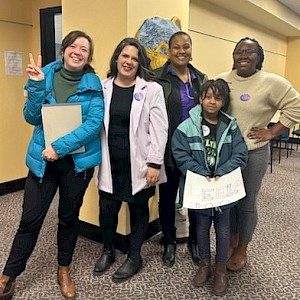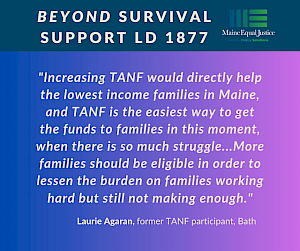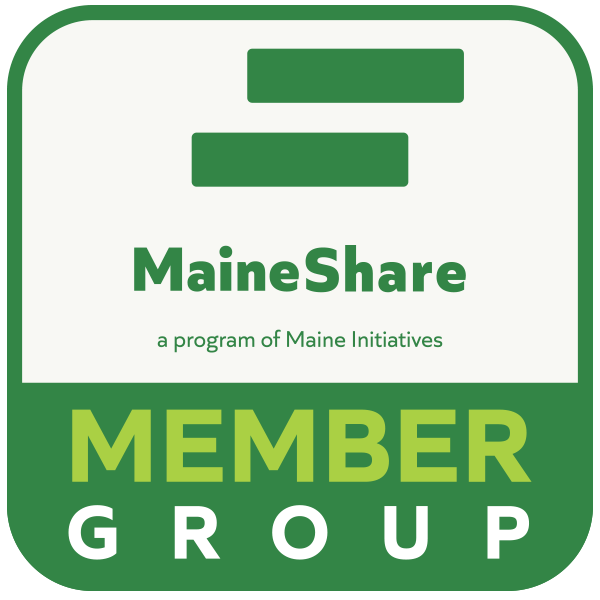Want to get connected with the work to improve economic security for all in Maine? Sign up to get updates!
TANF, or Temporary Assistance for Needy Families, provides cash assistance to families with low income. TANF can help provide relief when families fall on hard times, by making funds (cash) available to help pay the bills and for necessities. But the program’s cash support has never been enough. In fact, Maine’s TANF grant had fallen below the equivalent of 35% of the federal poverty level – just $723 a month for a single-parent with two children. This is the lowest TANF grant of any New England state. Families receiving TANF describe living life in a constant “survival mode.”
Getting families enough resources to get beyond survival and thrive is one reason why our TANF Leadership Team (made up of parents who have participated in TANF themselves) worked with Rep. Michele Meyer (D-Eliot) to introduce LD 1877, An Act to Reduce the Number of Children Living in Deep Poverty by Adjusting Assistance for Low-income Families.
This week, LD 1877 passed the House and Senate and is expected to be signed into law soon! It will increase Maine’s current TANF grant amount by 20%, meaning a single-parent family of three will now receive $868 per month. LD 1877 will provide a little more breathing room for families who are pursuing their g oals and a better life for themselves and their kids.
oals and a better life for themselves and their kids.
How we got here
Maine Equal Justice formed in the same year as the federally-funded Temporary Assistance for Needy Familie (TANF) program, and we’ve been working to improve it for Maine’s families ever since. In 1996, a new law turned federal income support for families (previously called Aid to Families with Dependent Children, or AFDC), into TANF. It also created harsh requirements and restrictions that increased hardships for families who are trying to make ends meet. But states have some leeway in how they run their TANF programs, and that is where our reform efforts have focused.
The most important direction about how Maine should improve TANF has always come from people who have experience with the program. Our TANF leadership team and policy and legal staff have fought to get more families more cash assistance through the TANF program; pushed back against harsh work requirements and a culture of shame and blame for families seeking support; worked to ease the “benefits cliff"; and worked with the legislature to add more support services and education and training opportunities.
Where do we go next?
 LD 1877 is not enough, on its own, to ensure all Maine’s families with low income have the resources to get “beyond survival.” Families are struggling, and our poverty rates reflect that. Almost one in eight Maine children are growing up in poverty. This number is even more stark in Maine’s more rural counties like Piscataquis, Somerset, and Washington counties, where the child poverty rate is above 18% (close to one in five).
LD 1877 is not enough, on its own, to ensure all Maine’s families with low income have the resources to get “beyond survival.” Families are struggling, and our poverty rates reflect that. Almost one in eight Maine children are growing up in poverty. This number is even more stark in Maine’s more rural counties like Piscataquis, Somerset, and Washington counties, where the child poverty rate is above 18% (close to one in five).
But, as the bill makes its way to the Governor’s desk after going “under the hammer” (a unanimous vote) in the House and Senate, and after a unanimous bipartisan vote in the Health and Human Services committee, we’re celebrating the important shift this moment represents.
In Maine and around the country, more people recognize that solving child poverty should not be a partisan issue, and that it impacts us all. It used to be much harder, frankly, to make the case to lawmakers that providing families with more income alongside workforce supports and opportunities for education, employment, and training will both reduce child poverty, and at the same time, help support Maine’s workforce goals.
Maine has taken some important steps to support families in meeting their goals, and if we work together, there’s so much potential we could unlock in our communities. LD 1877 builds on other recent progress including last year, lowering the asset limit in TANF (LD 945) and making Maine’s Child and Dependent Tax Credit fully refundable and available to the families with the lowest income. These changes open the TANF program up to more families, allowing them to save for their future, and enables low incomes families to receive a larger tax return to help pay for important costs.
As more people see and understand the success of national policies like the pandemic-era federal Child Tax Credit (which cut child poverty rates nearly in half when it was in effect!), policies that provide direct financial support to families have been gaining national momentum. Advocates are working to restore the federal enhanced Child Tax Credit, many states are working to increase refundable tax credits for families, and more communities are implementing guaranteed income programs–cash payments to families to meet their needs without strings attached.
The benefits of these policies, and even bigger ideas like guaranteed income pilots, are tangible--making rent, having enough healthy food to eat, buying clothes. But some important benefits are intangible, like parents spending quality time with their kids as they grow, and lifting some of the constant stress that comes with poverty so that there’s time to plan for the future. We’ve seen many of these same positive effects with MEJ’s Build HOPE program, which supports parents’ education. Progress like LD 1877 inspires us to keep working toward that ultimate goal: to build communities where we all have enough resources to thrive.






 Maine Equal Justice focuses its work on many of the issues that affect people’s daily lives – access to adequate health care, housing, transportation and childcare; food and income security; and higher education and training. Maine Equal Justice is a 501 c 3 nonprofit organization. Our EIN is 04-3346273.
Maine Equal Justice focuses its work on many of the issues that affect people’s daily lives – access to adequate health care, housing, transportation and childcare; food and income security; and higher education and training. Maine Equal Justice is a 501 c 3 nonprofit organization. Our EIN is 04-3346273. 